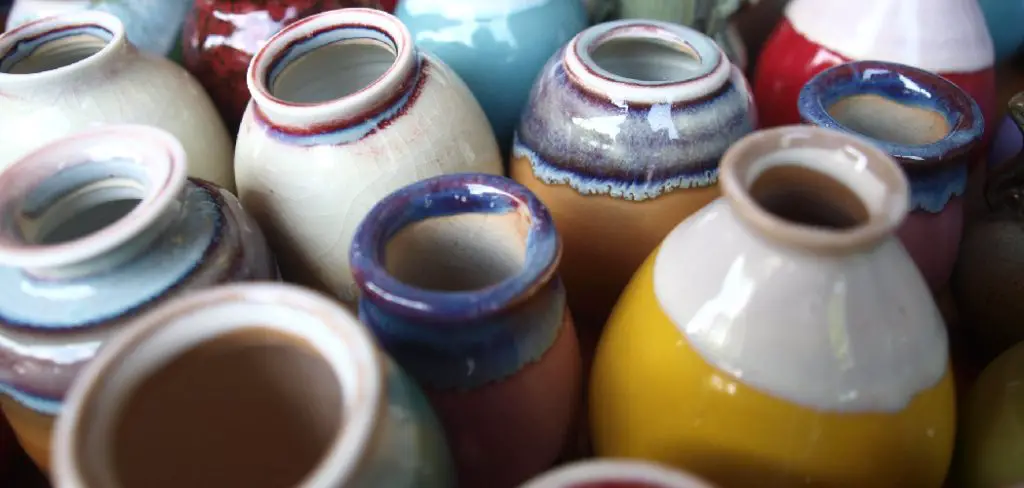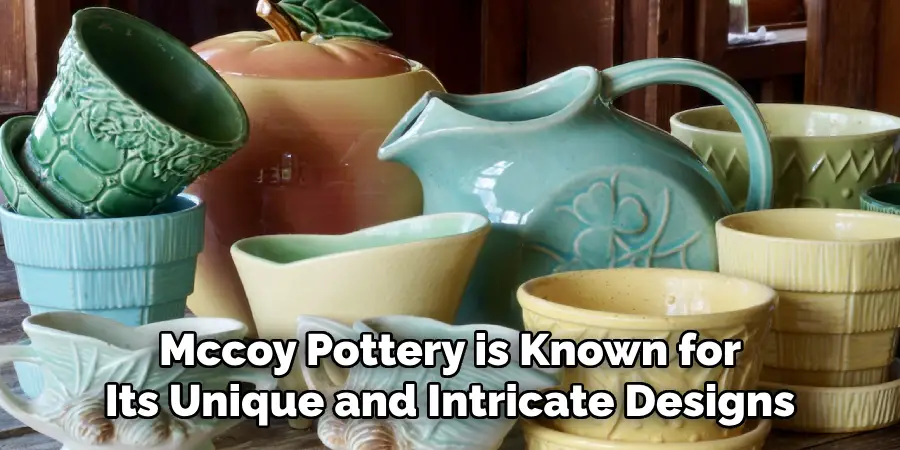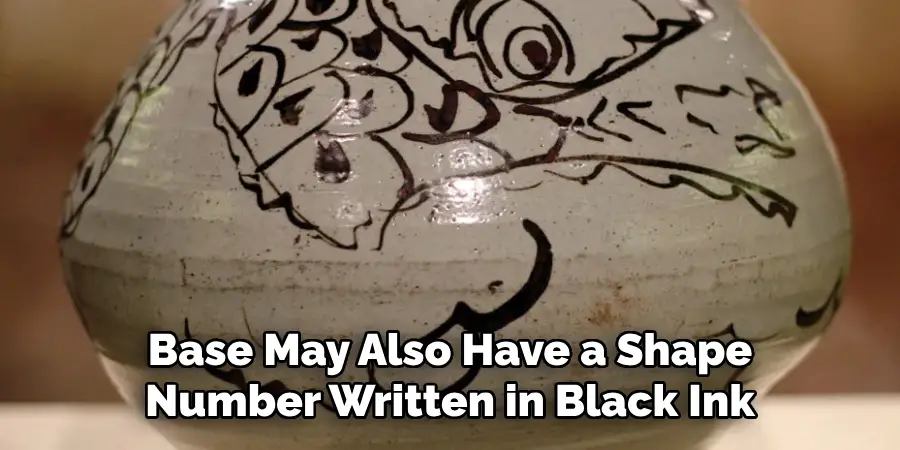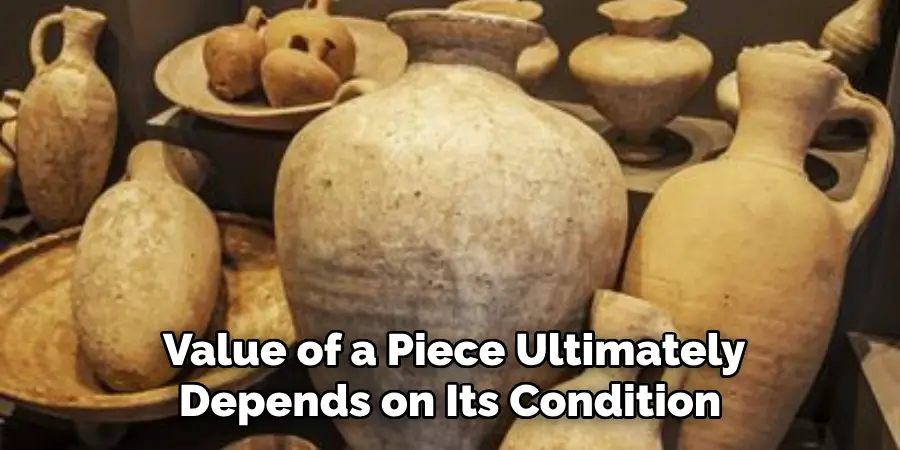Are you an antique enthusiast hoping to add rare and unique pieces of McCoy pottery to your collection? Identifying authentic and genuine McCoy pottery can be challenging, but it’s a rewarding experience when done right.

From distinctive designs with rich glazes and striking details to subtle identifying marks found on the base or underside of each piece, how to identify mccoy pottery here.
With some insight into its history and development as well as examination tips for confirming authenticity, you’ll soon have confident eyes that will help you spot original pieces at estate sales or antique shops!
What is McCoy Pottery?
McCoy Pottery, also known as Nelson McCoy Pottery Company, was founded in Roseville, Ohio in 1910 by Nelson McCoy and J.W. Vance. It started out as a small-scale manufacturer of functional and utilitarian stoneware items such as jars, churns, and jugs.
However, in the early 1920s, McCoy Pottery shifted its focus to creating decorative and ornamental pieces, including vases, planters, and figurines. The company quickly gained popularity for its innovative designs and high-quality products.
Needed Tools and Materials
Given below are the tools and materials that you will need to identify McCoy Pottery:
Good Lighting:
Properly analyzing and examining pottery requires good lighting. Natural light is preferred, but if not available, make sure to use bright and direct artificial light.

Magnifying Glass:
A magnifying glass can help you spot any small details or identifying marks on the pottery. It’s especially useful for distinguishing between genuine and fake pieces.
Reference Books:
Having reference books that contain images and detailed information on McCoy Pottery can be helpful in identifying different styles, designs, and markings.
White Cloth or Paper:
Placing a white cloth or paper under the pottery while inspecting it can help you see any imperfections or marks more clearly. It also helps to prevent any scratches or damage to the piece.
10 Simple Step-by-step Guidelines on How to Identify Mccoy Pottery
Step 1: Examine the Glaze
McCoy Pottery is known for its rich and glossy glazes with vibrant colors, including greens, blues, pinks, yellows, and browns. Look for a smooth and even application without any drips or runs.
The glazes should also be free of any chips, cracks, or crazing. You may find a McCoy piece with a matte or unglazed finish, but these are less common. It’s important to note that glazes on McCoy Pottery can vary from piece to piece, but they always have a distinctive look and feel.
Step 2: Inspect the Design
McCoy Pottery is known for its unique and intricate designs. Look for patterns such as flowers, leaves, fruits, animals, geometric shapes, and abstract designs. The designs should be crisp and well-defined without any smudges or smears.

Pay attention to the details of each design, as they can help you identify specific McCoy collections. But keep in mind that some designs were used on multiple collections, so it’s important to look at other factors as well.
Step 3: Check the Shape and Size
McCoy Pottery comes in various shapes and sizes, from small vases to large floor jugs. Each collection has its own distinct shapes and sizes. For instance, the “Mammy” cookie jar collection has a typical round shape with a flat base, while the “Waterlily” vase collection is elongated and slender. Refer to your reference books for specific information on shapes and sizes for each collection.
Step 4: Look for Identifying Marks
McCoy Pottery pieces are typically marked in some way, either with an embossed or incise mark. The marks can be found on the base, underside, or inside of the pottery. Some common McCoy markings include “McCoy USA,” “Nelson McCoy,” and “McCoy Pottery.”
They may also have a number or symbol accompanying the name. Refer to your reference books for a comprehensive list of markings used by McCoy Pottery throughout its history. The absence of a marking does not necessarily mean the piece is fake, as some early pieces were left unmarked.
Step 5: Check for Imperfections
Authentic McCoy Pottery may have some minor flaws or imperfections due to its handmade nature. Look for small bumps, unevenness, or slight variations in color and shape. These imperfections add character and value to the piece.
However, if you notice any major or obvious flaws, it may be a sign of a fake or damaged piece. This is where a magnifying glass can come in handy. You can also run your fingers over the surface of the pottery to feel for any imperfections.
Step 6: Examine the Base
The base of McCoy Pottery pieces can provide valuable information for identification. Look for any incised marks, embossed numbers or letters, and copyright dates. The base may also have a shape number written in black ink, indicating its mold number.

Some early McCoy Pottery pieces had paper labels on the base, which are now rare to find. Also, check for any glaze marks or drips that have formed during the firing process.
Step 7: Research Different Collections
McCoy Pottery has produced hundreds of collections throughout its history, each with its own distinct style and characteristics. Familiarize yourself with some of the popular and notable collections from different eras and their unique features. This will help you to quickly identify a piece when you come across one.
Step 8: Seek Expert Opinion
If you’re still unsure about the authenticity of a piece, consider seeking advice from an expert or someone experienced in McCoy Pottery. You can also join online forums and discussion groups where collectors share their knowledge and expertise on identifying McCoy Pottery.
Don’t be afraid to ask for help or clarification. It’s always better to be sure than regret a purchase later. But remember, it takes time and practice to become an expert in identifying McCoy Pottery.
Step 9: Be Careful When Buying Online
Buying McCoy Pottery online can be tricky, as you are unable to physically examine the piece. Make sure to buy from reputable sellers and carefully review the images and descriptions provided. Ask for more pictures if needed and always read reviews before making a purchase. If possible, try to buy from sellers who offer a return policy in case the piece turns out to be fake or damaged.
Step 10: Trust Your Gut
Lastly, trust your instincts when it comes to identifying McCoy Pottery. After reading and learning about the different techniques and guidelines for identification, you will develop a natural instinct for spotting fakes or replicas. If something feels off or too good to be true, it may be best to avoid the purchase. Remember, collecting McCoy Pottery is a journey and not a race.
Take your time and enjoy the process of identifying and adding authentic pieces to your collection. With patience and practice, you will become an expert in no time! So, follow these simple steps on how to identify mccoy pottery, use your knowledge and trust your gut when identifying McCoy Pottery. Happy collecting!
Tips
- Familiarize Yourself With Mccoy Pottery Reference Books and Resources
- Join Online Forums and Discussion Groups for Valuable Insights and Advice From Experienced Collectors
- Carefully Examine the Glaze, Design, Shape, Markings, Imperfections, and Base of a Piece When Identifying Mccoy Pottery.
- Take Your Time and Trust Your Instincts When Making a Purchase. It’s Better to Be Sure Than Regret It Later.
- Enjoy the Process and Have Fun Collecting Authentic McCoy pottery Pieces!
Frequently Asked Questions
Q1: Is Mccoy Pottery Valuable?
A1: McCoy Pottery has gained a steady following of collectors over the years and some pieces can be quite valuable, particularly those from rarities or limited edition collections. However, the value of a piece ultimately depends on its condition, rarity, and demand from collectors.

Q2: Can I still use McCoy Pottery as functional pieces?
A2: Yes, many McCoy Pottery pieces were designed to be used as functional items such as vases, bowls, and cookie jars. However, due to their age and collectible value, it’s recommended to use them with caution and handle them carefully. Some collectors may choose to display their McCoy Pottery pieces rather than use them for everyday purposes.
Q3: How do I take care of my McCoy Pottery?
A3: It’s important to handle your McCoy Pottery with care, avoiding any sudden movements or bumps that could cause damage. Clean them gently with a soft cloth and mild soap, avoiding harsh chemicals or abrasive cleaners. Store them in a dry and dust-free area to prevent any potential damage.
Q4: Are there any resources for identifying McCoy Pottery?
A4: Yes, there are many reference books available that contain information on the different collections, markings, and identifying features of McCoy Pottery. You can also find online guides and forums where fellow collectors share their knowledge and expertise on identifying McCoy Pottery.
Additionally, some antique stores or pottery experts may offer identification services for a fee. Overall, it’s always useful to have multiple resources when identifying McCoy Pottery pieces.
Conclusion
As you can see, there are some easy ways to identify McCoy pottery. Collectors should make sure to look for the trademark “NM” on pieces or look for signature McCoy molds and designs. Check the bottoms of pieces for the words “McCoy USA” and/or trademark stamps in order to verify age and authenticity.
By researching current selling prices and studying McCoy pottery books, any collector should be able to authenticate their own collection with confidence.
If you are a newbie collector, or if you just want an impartial assessment of your McCoy pottery pieces, contacting an expert appraiser is always an option that could give you peace of mind. Now that you know how to identify mccoy pottery, you can confidently purchase (or proudly display) these timeless works of art.

